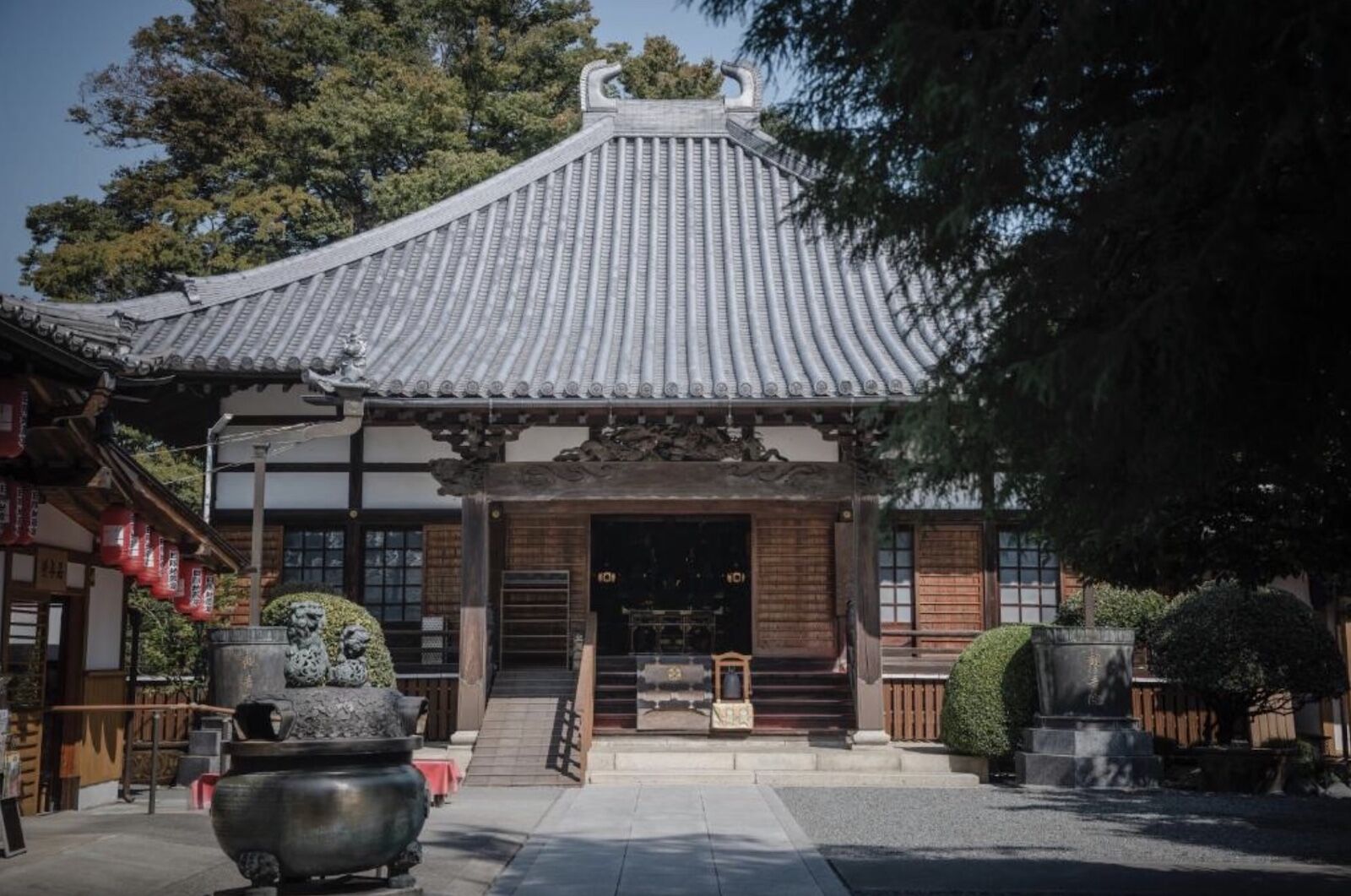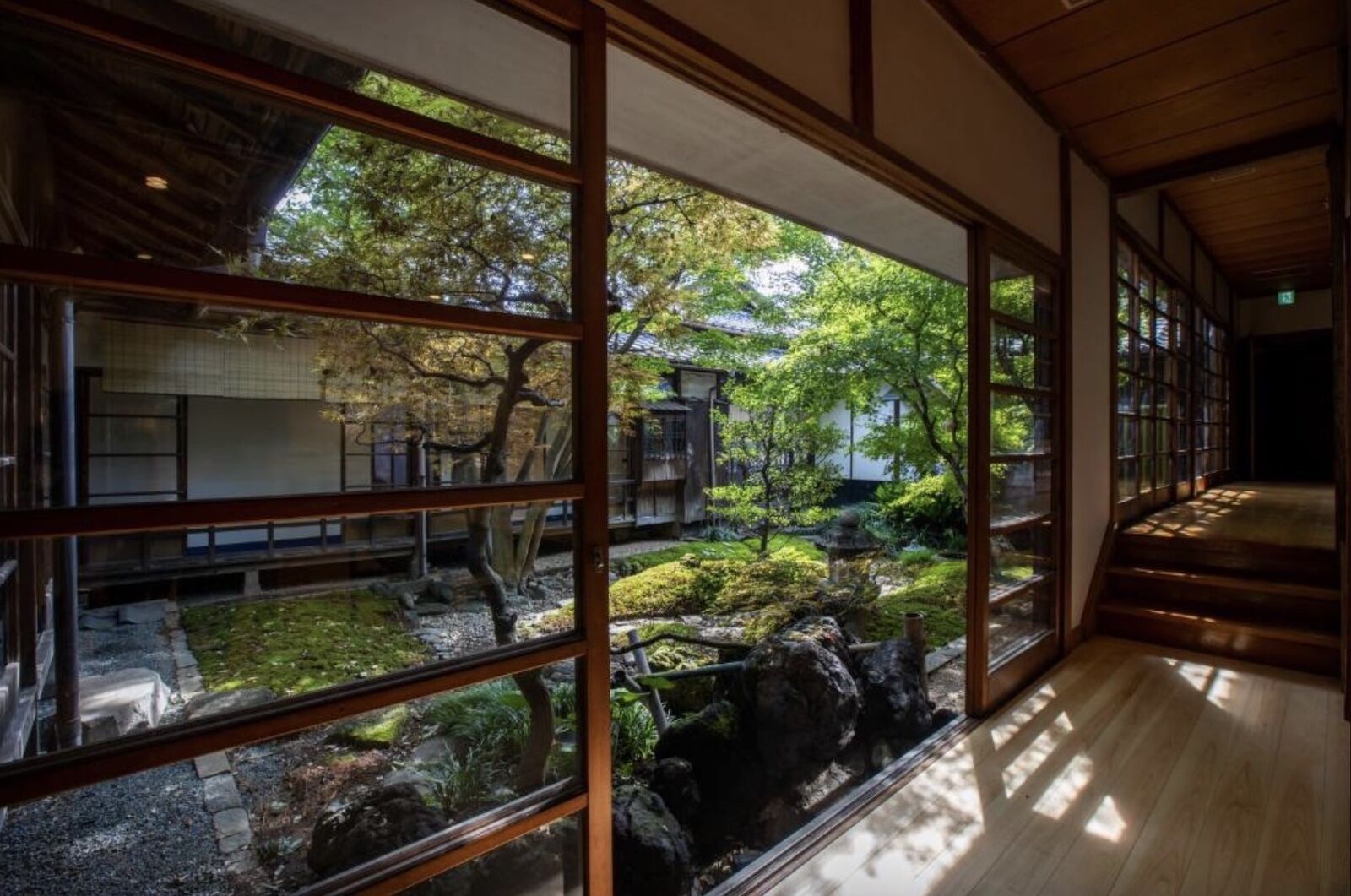Japan’s cherry blossom season, which occurs between March and May depending on the weather and the region, is undeniably one of the best times of the year to visit the country. But if you miss the cherry blossom window in your preferred area, or if you can’t get enough colorful blossoms in your life, know that there are other blooming events that you can catch that are just as pretty. Japan’s Great Wisteria Festival, which takes place in the Ashikaga Flower Park between mid-April and mid-May every year, is a spectacular display of purple, pink, and white flowers that you don’t want to miss.
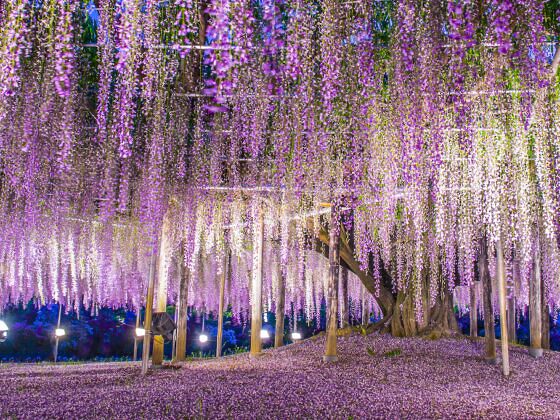

Japan’s Great Wisteria Festival Is Just as Pretty as Its Cherry Blossom Season
- Where and when does Japan’s Great Wisteria Festival take place?
- How to get to the Ashikaga Flower Park from Tokyo?
- How much does it cost to go to the Ashikaga Flower Park?
- What makes the wisterias in the Ashikaga Flower Park so special?
- What else is there to see in the Ashikaga Flower Park besides the wisterias?
- When is the best time to visit the Ashikaga Flower Park?
- Where to stay near the Ashikaga Flower Park?
Where and when does Japan’s Great Wisteria Festival take place?
Japan’s Great Wisteria Festival takes place in the Ashikaga Flower Park between mid-April and mid-May every year. The Ashikaga Flower Park is located in the city of Ashikaga, in the Tochigi prefecture, north of Tokyo.
How to get to the Ashikaga Flower Park from Tokyo?
The fastest and most-direct way to get from Tokyo to the Ashikaga Flower Park is to take the Shinkansen, Japan’s bullet train.
The Tohoku Shinkansen line, which departs from Ueno Station in Tokyo, takes you to Oyama Station in the city of Oyama, in the Tochigi prefecture. From the same station, the local Ryomo Line will take you to the Ashikaga Flower Park Station. Altogether, the trip takes a little more than 90 minutes, and there are multiple trains operating every day.
Since both the trains to get from Ueno Station in Tokyo to Ashikaga Flower Park Station are JR trains (Japan Railway), you can use your Japan Rail Pass. Without the Japan Rail Pass, this train journey would cost approximately $28 (JP¥ 4,180).
How much does it cost to go to the Ashikaga Flower Park?
The price of admission to the Ashikaga Flower Park varies according to the blooming of the flower and is at its highest in April and May, and at its lowest between July 1 and December 30. Admission for adults in April and May ranges from $6 to $15 (JP¥ 900 to JP¥ 2,200), while admission for children ranges from $3.35 to $7.35 (JP¥ 500 to JP¥ 1,100).
What makes the wisterias in the Ashikaga Flower Park so special?
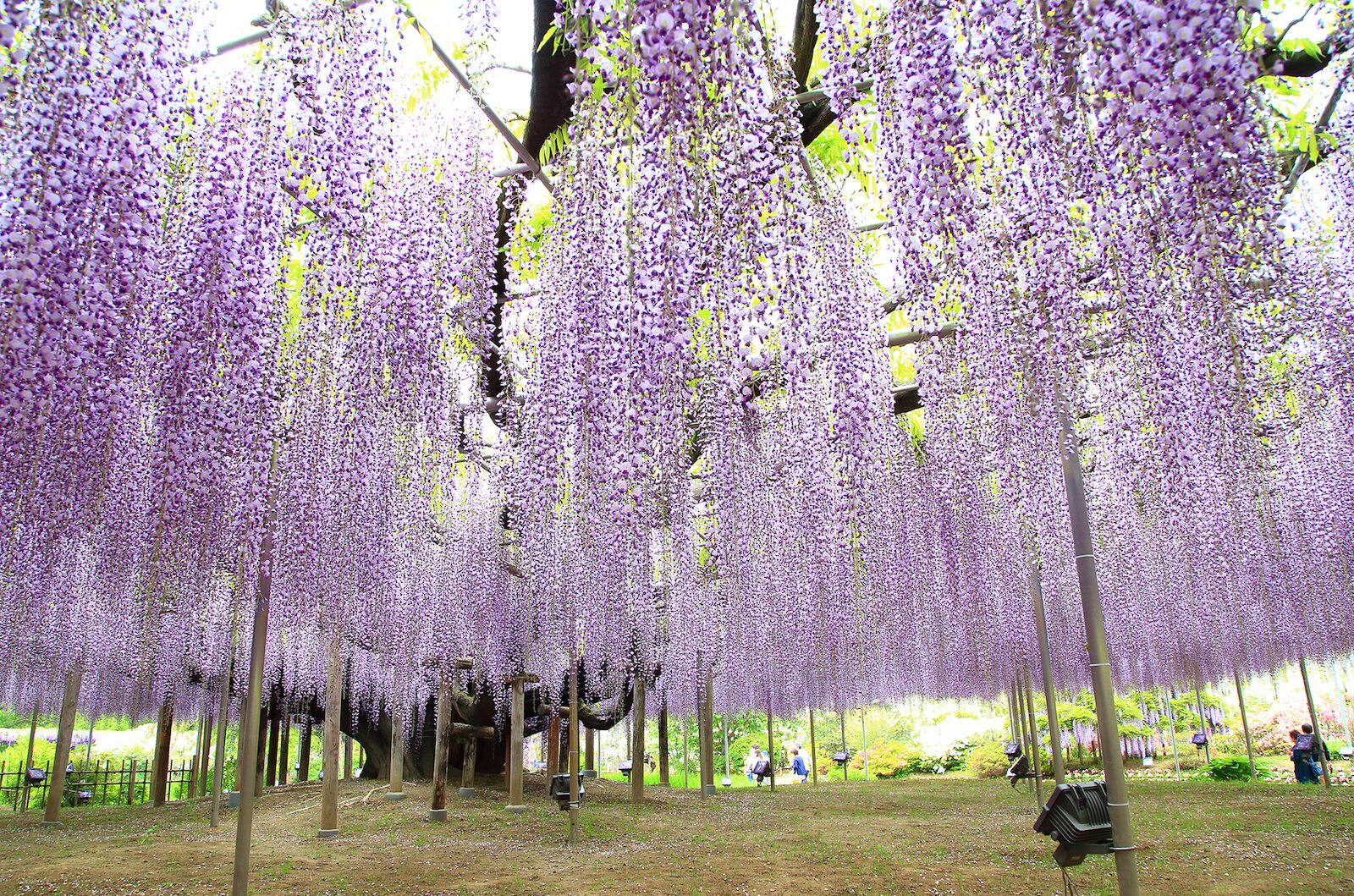
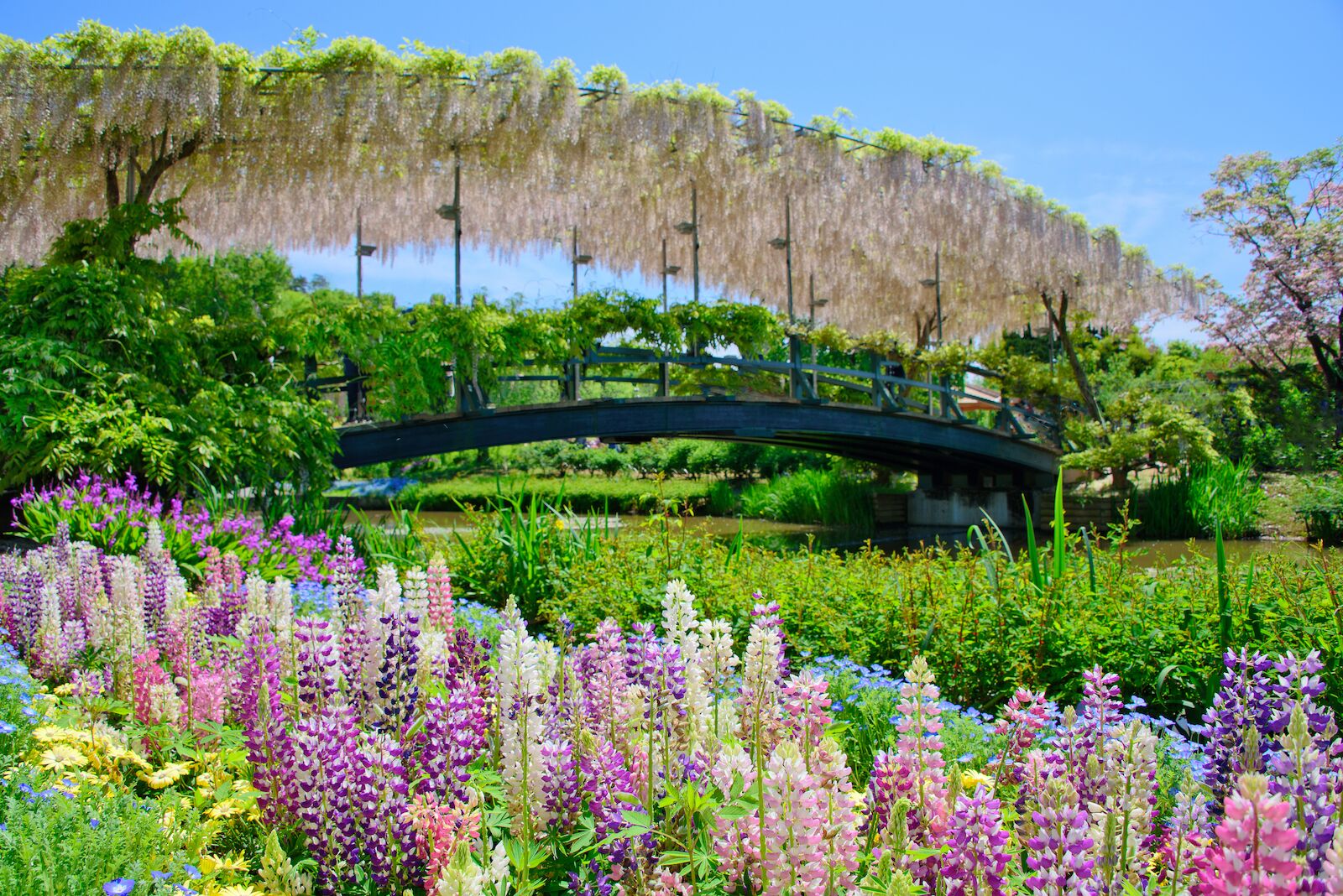
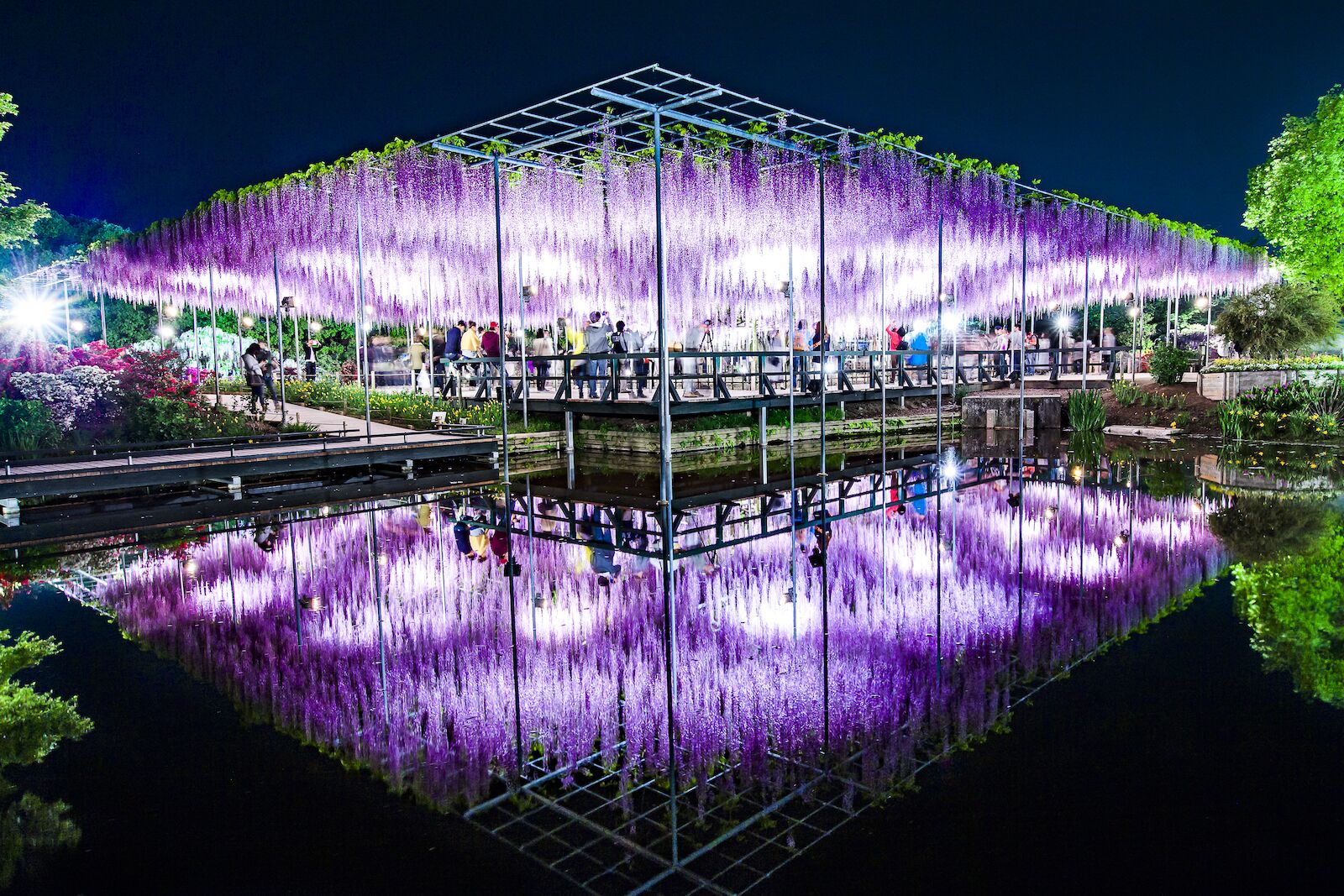
There are more than 350 wisteria trees in Ashikaga Flower Park, all blooming within the same time period, between mid-April and mid-May, creating a magnificent display of flowers ranging from purple to pink to white. Among the 350 wisteria trees is The Great Wisteria, an astonishing 160-year-old specimen whose wines extend over 600 trellis, and which blooms a bright shade of purple every year. While The Great Wisteria is the star of the festival, the 262-foot long white wisteria tunnel, and the immense pale pink wisteria vine, are also not to be missed.
While the park is usually open from 10 AM to 5 PM, the hours are extended in April and May for visitors to see the tree illuminated at night.
What else is there to see in the Ashikaga Flower Park besides the wisterias?
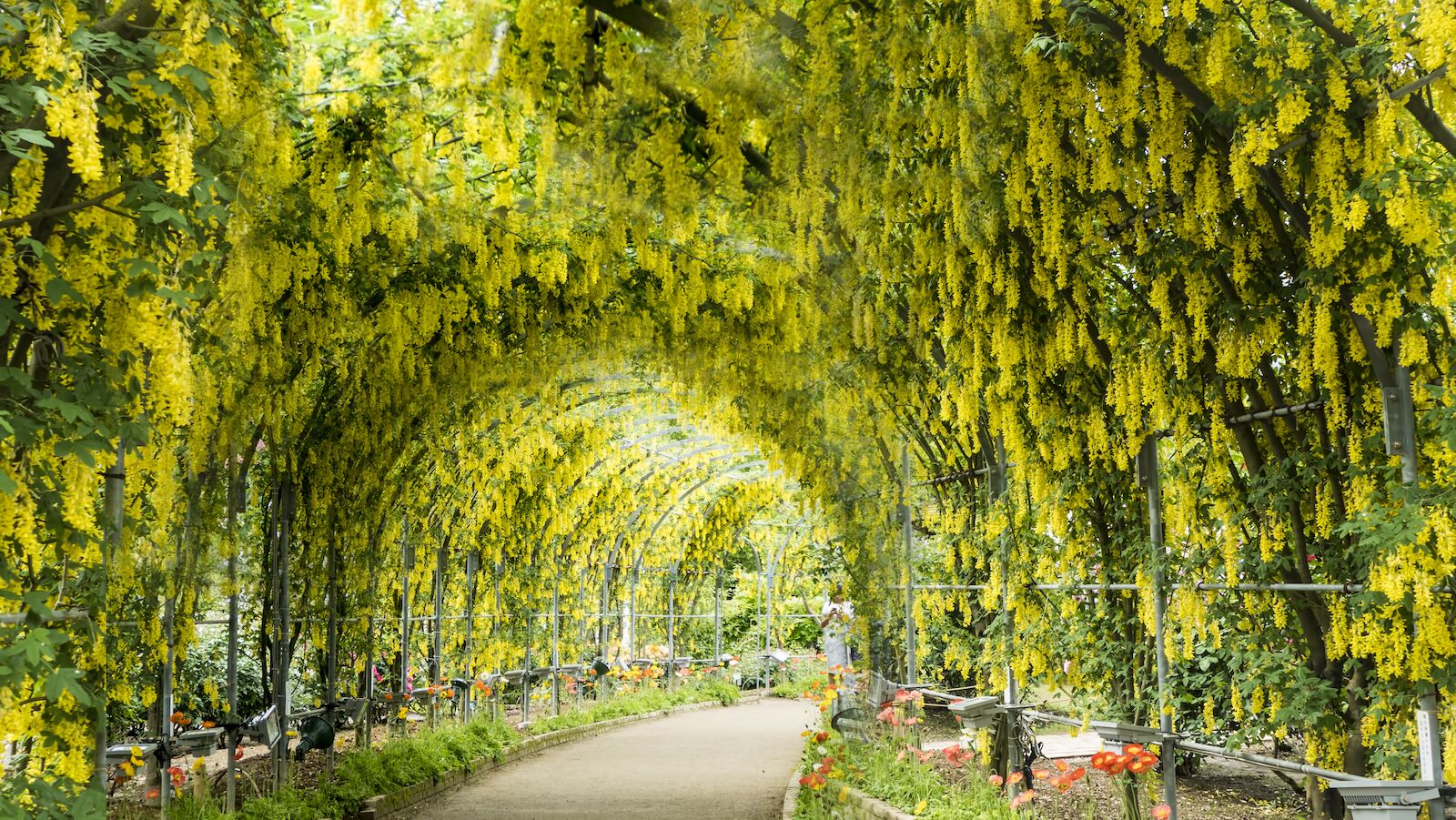
Tunnel of laburnums in bloom at the Ashikaga Flower Park. Photo: NH/Shutterstock
While the wisteria trees, especially The Great Wisteria, are what attract most people to the Ashikaga Flower Park in the spring, there are other types of blooms to see, including the beautiful yellow hanging flowers of the laburnums which form a bright tunnel, the 5,000 azaleas bushes, the many rose bushes, and more.
When is the best time to visit the Ashikaga Flower Park?
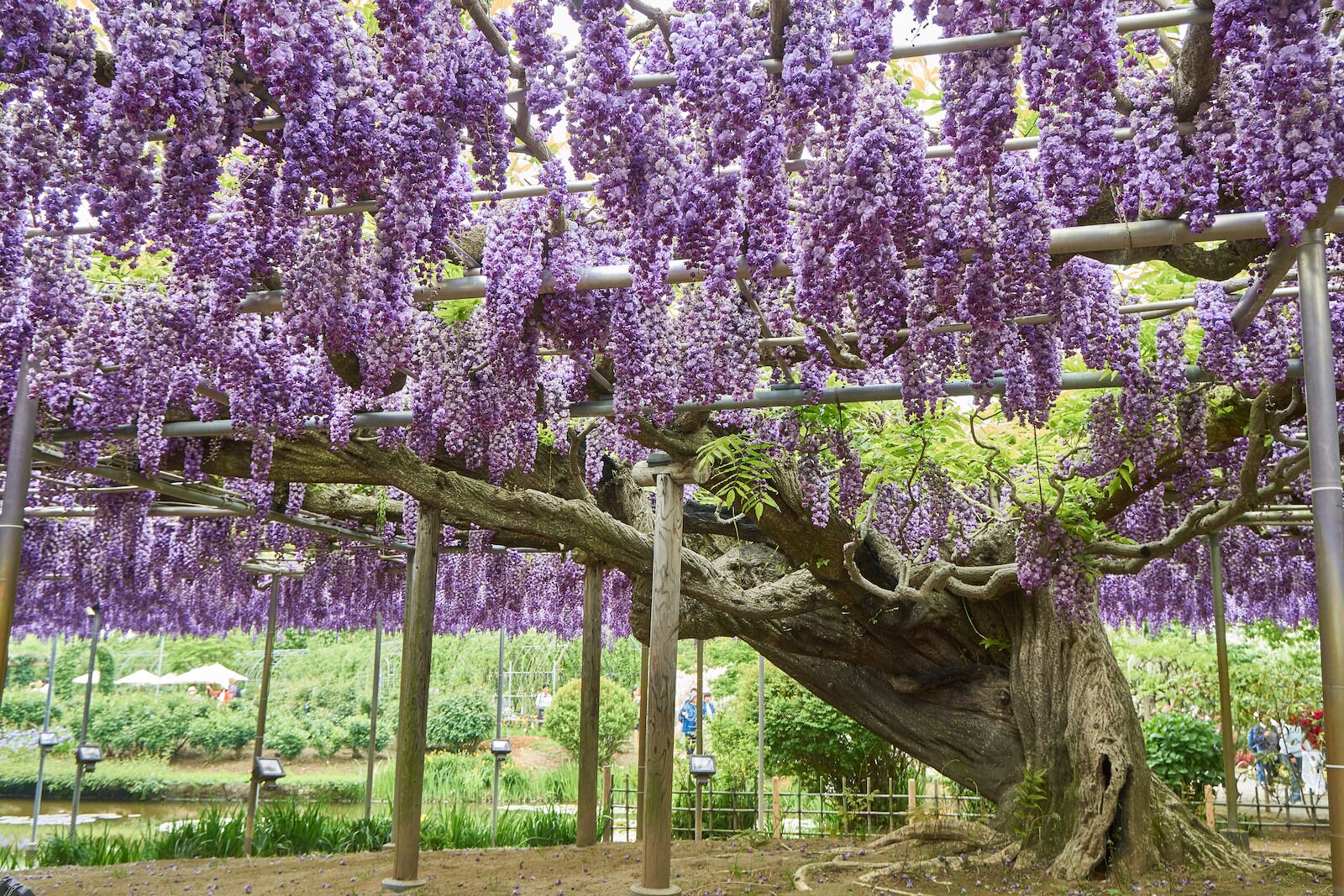
The Great Wisteria. Photo: doratoy/Shutterstock
From mid-April to mid-May is the best time to visit the Ashikaga Flower Park if you want to see the wisterias, laburnums, and azaleas in bloom; however, know that they don’t all flower at the same time:
- The pink wisteria blooms from mid- to late April
- The Great Wisteria flowers from late April to early May
- The white wisteria blooms in early May
- The laburnums flower from early to mid-May
- The azaleas bloom from late April to early May
Different blooms occur all year around at the Ashikaga Flower Park. If you can’t visit in April or May for the Great Wisteria Festival, you should still make the trip to the park for the roses, rhododendrons, and clematis from mid-May to early June, the iris and hydrangeas from early June to early July, the waterlilies throughout the summer, and much more during the rest of the year.
Traveling to Japan? Check out Matador’s Japan accommodations guides:
Where to stay near the Ashikaga Flower Park?
We hope you love the hotels we recommend! Just so you know, Matador may collect a small commission from the links on this page if you decide to book a stay. Listed prices are accurate as of the time of publication.
Accommodation options around the Ashikaga Flower Park are nothing to write home about, but if you don’t mind traveling a little farther out, you can experience a highly rated traditional Japanese hotel.
Temple Hotel Kannonin is a guest house within a temple complex that comprises three bedrooms, one shared kitchen (fully equipped), one full bathroom, and one shared living room. The guest house, built in a traditional style, with tatami floor, futon beds, and room partitioned thanks to shoji and fusuma doors, surrounds a beautifully landscape Japanese garden. There is also an open-air bath with views on a rock garden. Note that only one group can book the guest house at a time, so you’re never sharing with strangers.
Temple Hotel Kannonin is located less than one hour by train from the Ashikaga Flower Park. To get to the Temple Hotel Kannonin, take the local Ryomo Line from the Ashikaga Flower Park Station to Kiryu Station and then walk the 0.9 mile to the hotel or take a taxi.
